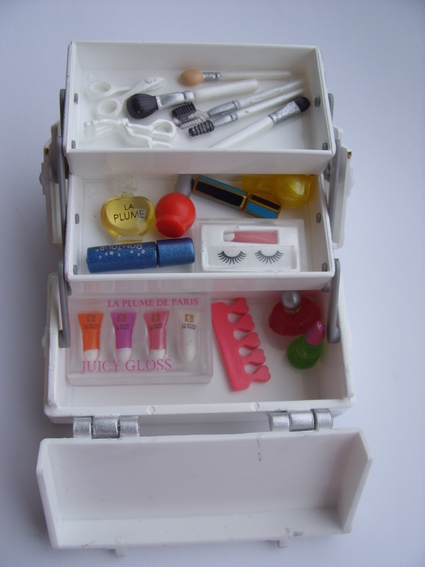Bold and italic
**bold** becomes bold
//italic// becomes italic
**//bold italic//** becomes bold italic
External links
http://www.mediamatic.net becomes www.mediamatic.net
[/9786/en Mediamatic Exhibitions] becomes Mediamatic Exhibitions
[mailto:desk@mediamatic.net Mail Mediamatic] becomes Mail Mediamatic and cannot be read by spam robots
mailto:desk@mediamatic.net becomes desk@mediamatic.net, and cannot be read by spam robots
Internal links
You can link to pages within the Mediamatic website by using the unique id number of the page, the title of your link and the following code:
((25562|Link to Mediamatic Crew))
becomes:
Link to Mediamatic Crew
Another way is to establish a link with the use of the 'symbolic name' instead of the id. Give the thing you're linking to a symbolic name, and use the code as follows:
((home_article|Link to the homepage))
becomes:
Link to the homepage
In this code, 'home_article' is the symbolic name of the page you're linking to.
FYI: You can give a symbolic name to any 'thing' in Anymeta. Come up with a symbolic name and add it in the Admin under the 'admin' tab.
Placing an image in the page body
If you want more variation between text and images, you can place an image inside the page body. First upload a picture as usual. Then use the code [[image 1]]. The number of the image you fill in here (1, 2 or other) corresponds with the position of the your image and the other images on the page.
Adding a YouTube or Vimeo video
You can add a video from YouTube or Vimeo by clicking 'add image' and then selecting 'more options'. Paste the entire address of the YouTube or Vimeo-page in 'The image is on the Internet'.
You can also add a YouTube- or Vimeo-video in the running text of your article, with the use of the following codes.
For YouTube you use the id of the movie. This is the code behind the = sign in the address of the YouTube page. For example: [[youtube nogDHP0gl9M]] becomes
Vimeo works similarly. You copy the code that follows the vimeo.com url. For example: [[vimeo 3065954]] becomes
Quotations
> aber irgendwer muss diesen job ja machen und deshalb kann es
> nicht ändern . ich könnte dem text höchstens ein bisschen gut
> zureden, dass er auch als platzhalter eine wichtige rolle spielt und
> durchaus gebraucht wird.
becomes:
aber irgendwer muss diesen job ja machen und deshalb kann ich es
nicht ändern . ich könnte dem text höchstens ein bisschen gut
zureden, dass er auch als platzhalter eine wichtige rolle spielt und
durchaus gebraucht wird.
Lists and numbering
You can use the # and * signs to make different kinds of lists.
# japan
# bulgarije
# israel
becomes a list with automatic numbering:
- japan
- bulgarije
- israel
* japan
* bulgarije
* israel
becomes a list with bulletpoints:
- japan
- bulgarije
- israel
Headings and subheadings
Make headings and subheadings with the +-sign. A single + creates a very large heading, five pluses make for a very subtle heading. Don't forget to leave a space after the last +.
+ Example of the largest heading
becomes:
Example of the largest heading
++ Example of a large heading
becomes:
Example of a large heading
+++ Example of a subheading
becomes:
Example of a subheading
++++ Example of a subtle heading
becomes:
Example of a subtle heading
+++++ Example of a special subheading
becomes:
Example of a special subheading
++++++ Example of a superspecial heading
becomes:
Example of a superspecial heading
Line or blank line
---- four dashes
becomes a line covering the full width:
The code _ (a space and an underscore) makes an empty or blank line
In the text body you can normally use one blank line. Anymeta removes extra blank lines automatically. With the code _ (a space and an underscore with a blank line above it AND below it), you can add an extra blank line.
Anchors (section linking): referring to a section on the same page
Follow these 2 steps to make a link to a section of a page.
Step 1: in the place where you're referring FROM, add the code: ((|lists and summaries#lists)). On the page this looks like: lists and summaries.
Step 2: in the place you want to refer TO, add an achor, with this code: [[# lists]. Note: add a space after the #.
For links to other pages on the website, use internal links.
Tables
|| Cell 1|| Cell 2 ||
|| Cell 3|| Cell 4 ||
becomes:
| Cell 1 | Cell 2 |
| Cell 3 | Cell 4 |
||< left||= center||> right ||
|| The quick brown|| fox jumps over|| the lazy dog. ||
| left | center | right |
| The quick brown | fox jumps over | the lazy dog. |
||~ header 1||~ header 2 ||
|| example 1|| example 2 ||
becomes:
| header 1 | header 2 |
|---|---|
| example 1 | example 2 |
HTML
Aside from all the abovementioned codes, editors can also use HTML codes. They always have to start with the HTML starting code and end with the HTML endcode. Add your code on a new line in between.
<html>
type the html here.
</html>
Mailinglist goodies
{$fullname} This will produce the the name of the person (well the name in his / her profile)
